
Alex Danchenko
Co-founder, Reteno
November 21, 2025

Alex Danchenko
Co-founder, Reteno
November 21, 2025
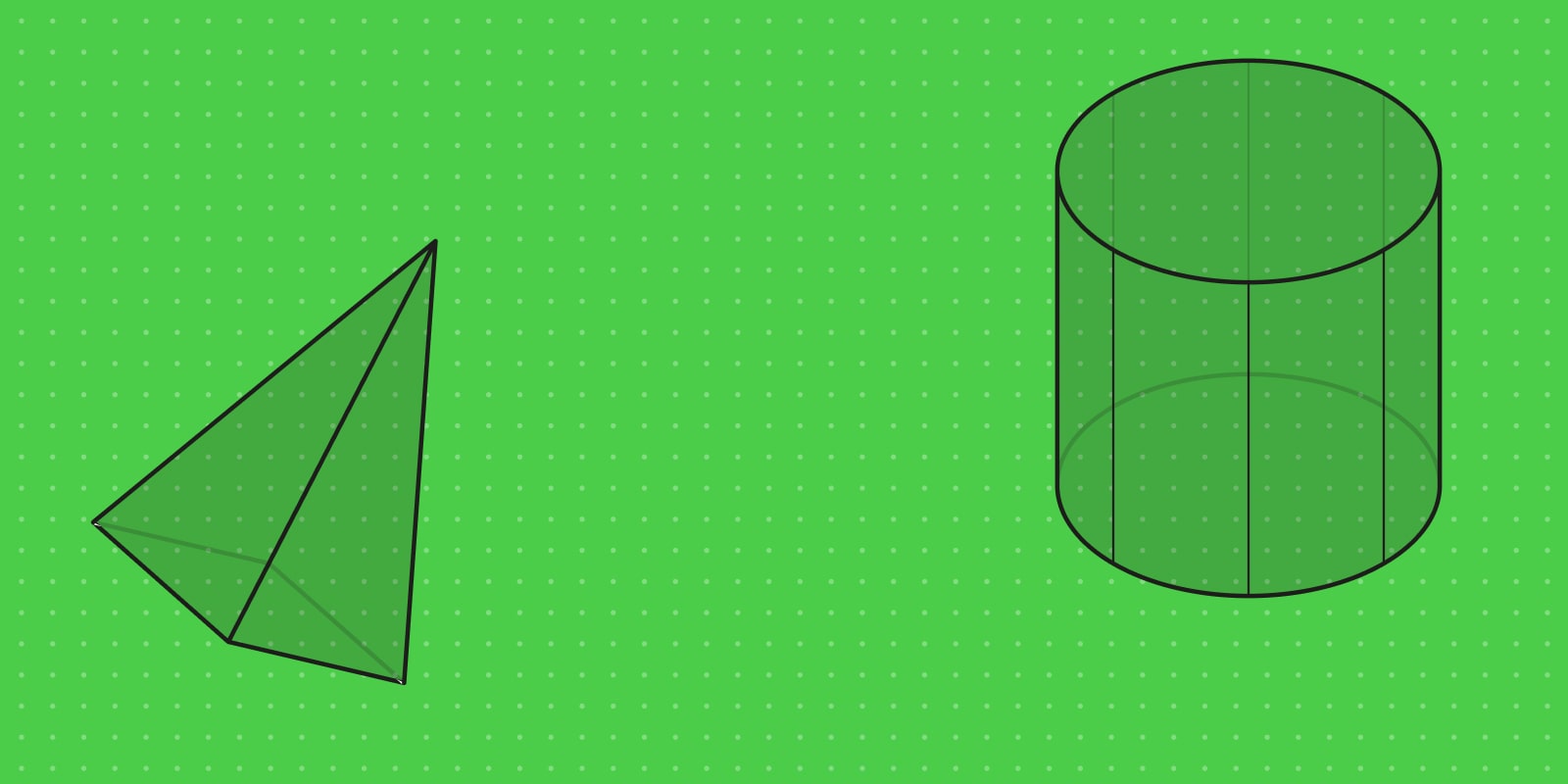
We live in a mobile-driven world. Our smartphones have become the ultimate devices, whose applications allow us to work, study, interact with others, and have fun. What’s the direct communication avenue between users and apps on their phones? Of course, push messages. These can be mobile push notifications originating from native apps or web push notifications sent through web browsers. Their mission is the same: to deliver timely updates, reminders, alerts, confirmations (acting as transactional notifications), and personalized content.
If users enable notifications on their devices (for iOS-based devices, the opt-in rate is 51%, and for Android-based – 81%), it opens a powerful mobile app marketing channel that astute entrepreneurs just can't ignore.
This article provides guidance on crafting messages that convert within a comprehensive push notification marketing strategy, explores push notification best practices with real-world examples, and highlights frequent mistakes made by inexperienced marketers when sending push notifications.
Before we move on to recommendations, it is necessary to explain the differences between in-app messages vs push notifications vs SMS.
In-app messages are an integral part of the application, operating exclusively within the app to guide and inform users. Push notifications are app-based (that is, they can appear only if the app is installed) and aim for user re-engagement, bringing them back to the app, enhancing mobile app retention rates, and minimizing opt-outs. SMS messages have nothing to do with the app. They are sent to the device via mobile networks and, unlike in-app messages or rich push notifications with GIFs, images, video thumbnails, and deep links, can contain only text of up to 160 characters.
Push notifications will bring you maximum value if you follow the best practices of creating and sending them outlined below.
As a long-time expert in mobile app marketing strategies, we know what you should do to make your push notifications resonate with your audience.
When asking for permission, you should realize that it goes beyond a mere formality. It’s a trust-building move that should come at the right time, namely, after users have experienced some benefit or understood the app’s value. Then, the request feels like a helping hand, not an annoyance.
You should know your audience inside out to make the notification arrive exactly at the right moment. Once you learn their habits and behavior and leverage send-time optimization, the message you send will never be ignored, much less cause opt-outs.
People are lazy creatures. When your notifications incorporate a shortcut to the app’s content, they have to make one tap less to find whatever they need, which improves the user experience and increases the odds that they will yield to the temptation and do whatever you want them to.
Don’t rely on text alone. Interactive buttons, GIFs, images, and other media in push notifications not only grab users’ attention but also convey information better than words.
Beating around the bush is the best strategy for losing a customer. Craft short and relevant messages that are easy to understand, and include a clear call to action.
These tiny icons are a great way to make your push notifications feel warmer and more personal, and to increase engagement by conveying excitement and fun.
When you make people laugh, you don't just entertain them – you break the ice and establish an emotional connection. Using quirky copy in your push notifications is a surefire way to do that, and users will appreciate it.
These push notifications are designed to address abandoned carts, skipped setups, and other incomplete actions. Bridging intent and action becomes easier when you visualize progress with rewards or milestones.
People love to give feedback, especially on things they enjoy. Leverage this human trait by asking them to answer poll questions in your push notifications.
Your update’s appeal won’t go unnoticed if it resonates with customer tastes and preferences revealed through their past behavior and purchase history.
Such messages let users know they are in the right place to enjoy a product or service. When delivered at the right time, the message comes as a pleasant surprise, making users eager to seize the opportunity.
People like to hear what they want to hear. Playing up to your customers, highlighting their expertise, and boosting their self-esteem drives engagement. Just don’t overdo it with compliments.
Even the tiniest milestones achieved by the user should be acknowledged and praised. Doing so instills a sense of accomplishment and validates the investment of effort and time.
In many industries (agriculture, logistics, hospitality, insurance, and more), weather is a factor to reckon with. Plus, it’s a topic of everyday conversation. These two reasons are enough to make smart references to the weather in your messages.
Let’s see how brands harness these recommendations.
Here you’ll find real-world examples of brands applying the best practices we’ve discussed.
ClassPass is a service that enables users to enjoy wellness and beauty appointments and classes. How does it display its perks in push notifications?
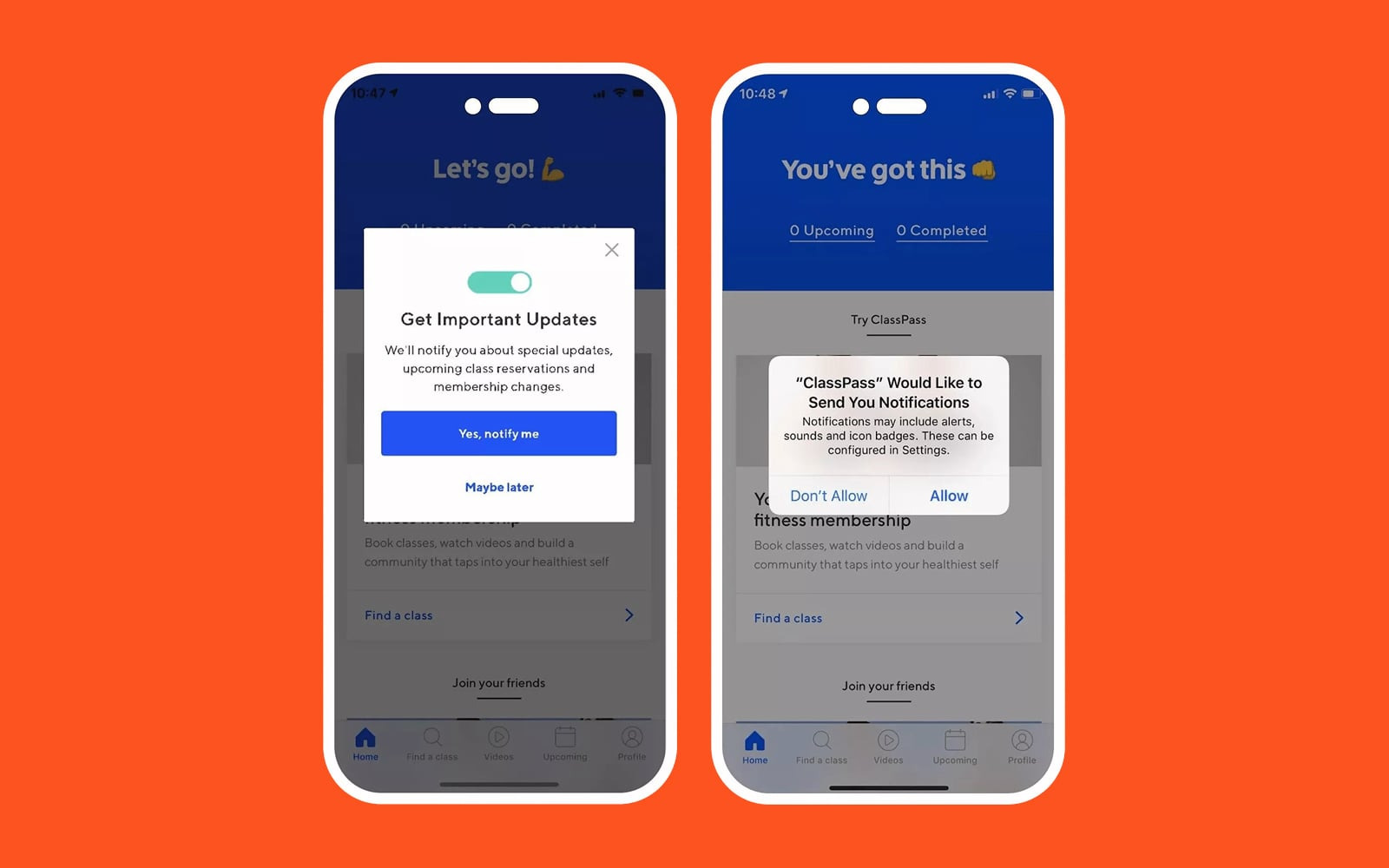
This notification appears right after a person onboards the app. In it, the company gently nudges the newcomer to explore the app first and only then decide.
No one knows impulsive shoppers better than H&M, and the brand knows how to capitalize on it.
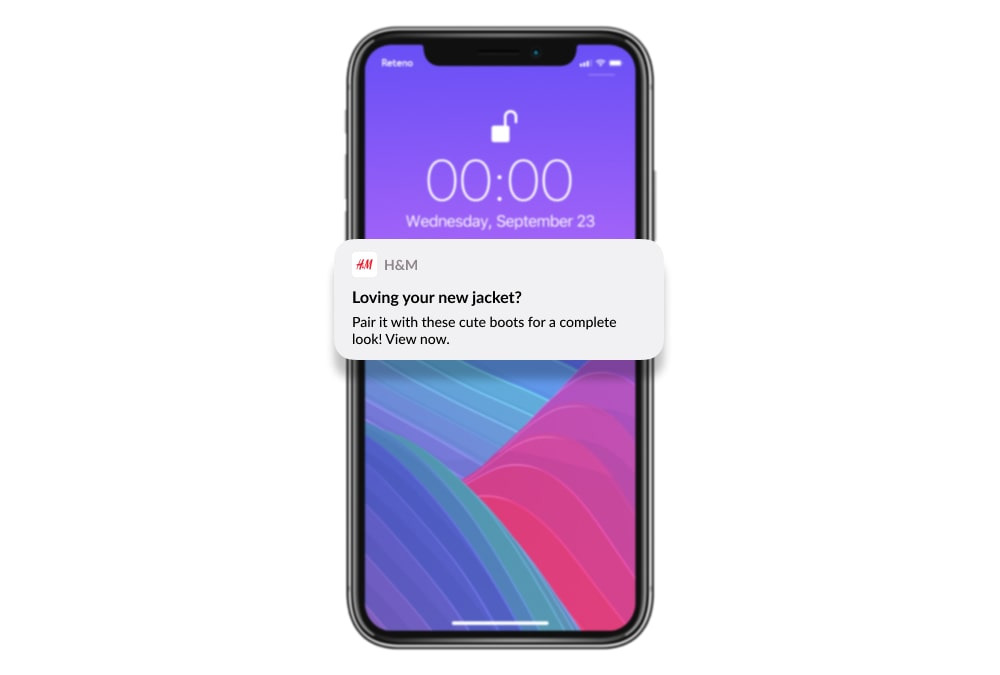
As soon as a satisfied buyer completes a purchase, the company is right on cue, suggesting they acquire another item while they’re most receptive to the suggestion.
Spotify is great at obliging its customers in this way. As soon as an artist releases a new hit, the platform becomes the quickest gun in the West (also East, South, or North, for that matter) and grants immediate access to the track.
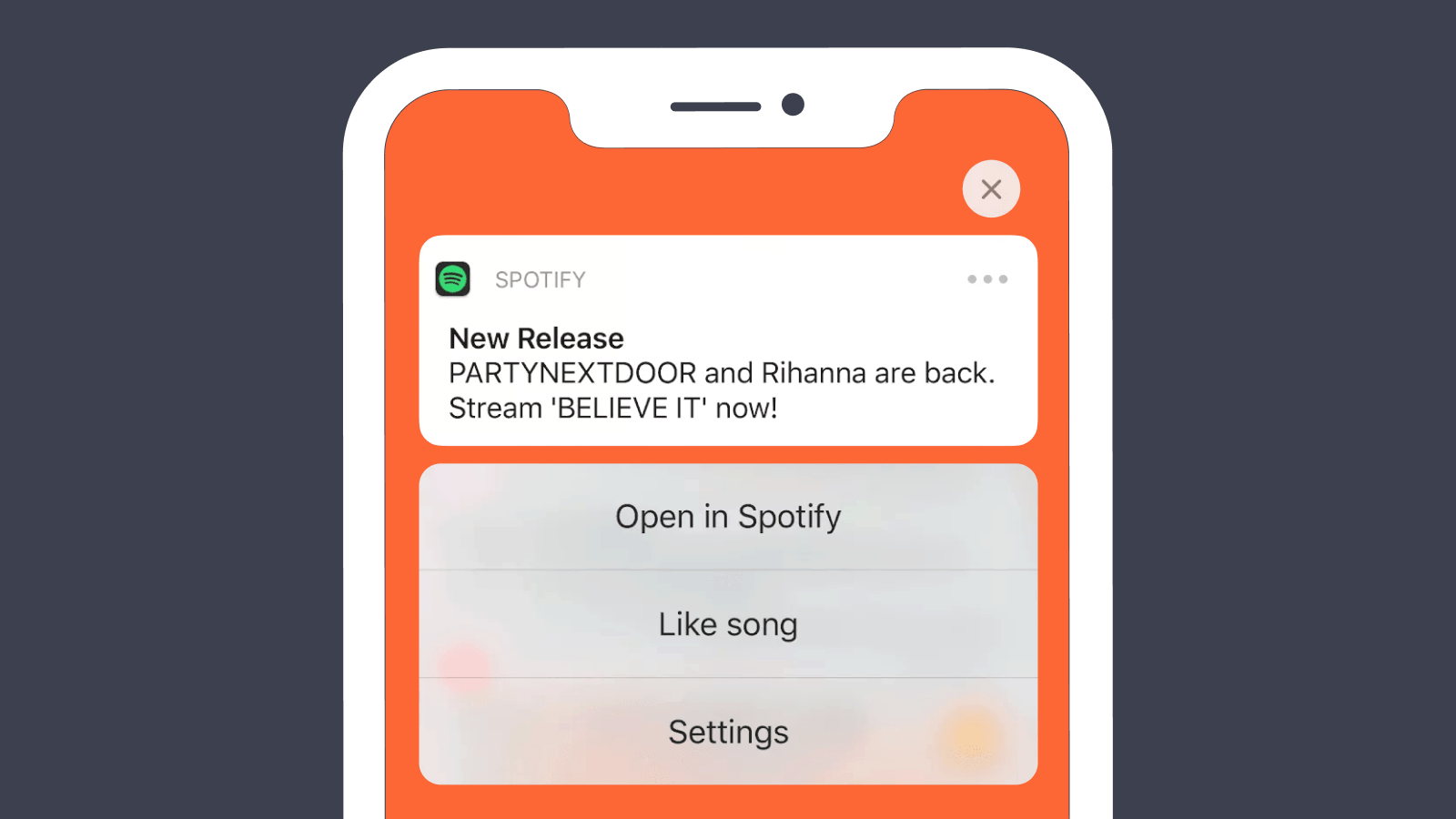
No need to open the app and search for the song. Fans can play the track directly from the lock screen.
Myntra, a fashion retailer, often uses media to inform users about discounts and special deals.

What’s not to like? The compelling image catches the eye immediately, while the details urge the viewer to act at once.
Look how Shake Shack, a fast food restaurant, nails it.

Concise and informative, with a touch of mystery (“what sweet thing do you mean?”). Plus, the exclusivity (for Mardi Gras) and urgency driver (“limited time”) make it clear and enticing.
As a news platform delivering personalized content, MoneyStream just can’t miss this tactic.

How do you like it? Instead of pushy CTAs or hard-sell language, the message includes a couple of cute emojis and a relatable reference to awkward interactions with delivery agents we’ve all experienced. It’s the perfect way to spark the readers' interest and guide them to the article on driverless cars.
This is what Five-O-Depot excels at.
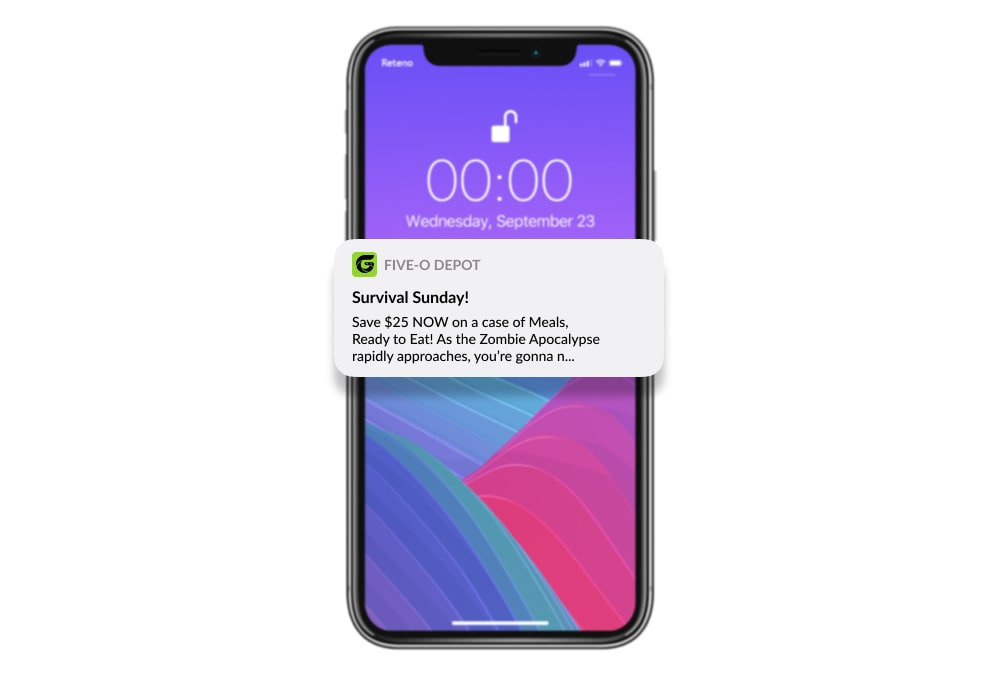
Instead of peppering users with boilerplate messages as if generated by a robot, the company spices them up with humor. Its informal brand voice allows for witty push notifications reinforced by the capitalized NOW and a saving incentive.
Check out this masterstroke by Jet, a strong Amazon competitor.
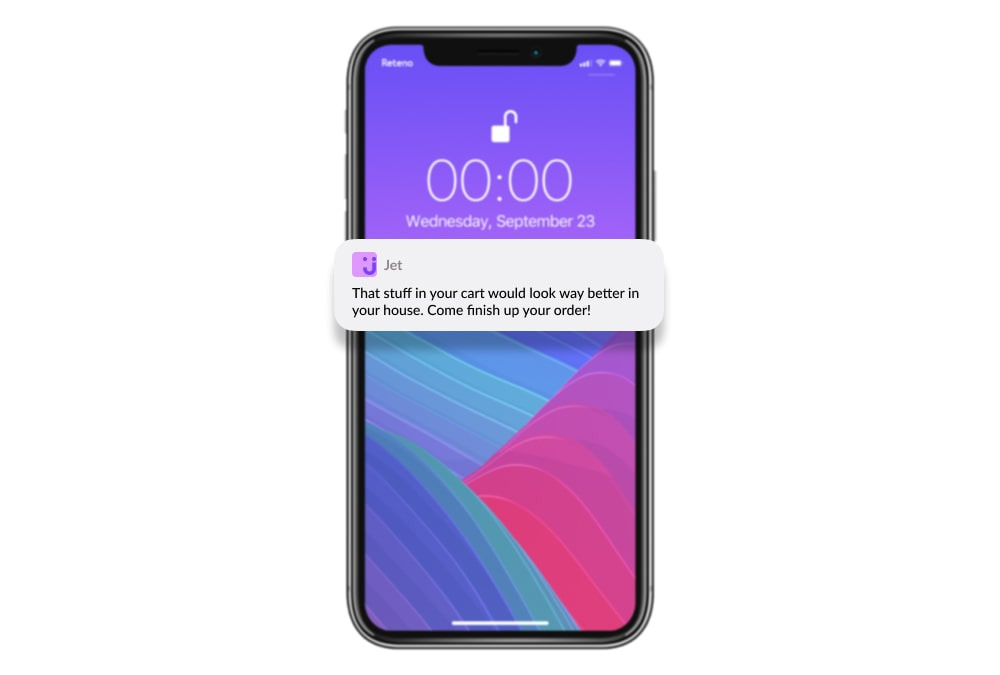
Light-hearted, breezy, and humorous, yet perfectly designed to encourage shoppers to complete their purchase right after cart abandonment. You can make the message even more persuasive by adding a time-limited incentive or progress cues, such as “You’re almost there! or “Just one more step.”
This strategy works perfectly for streaming platforms.

Netflix wants to know how subscribers like the show they’re watching. There’s no long list of questions — just two CTA buttons to choose from. The user’s quick feedback helps the company refine its content recommendations.
Again, Netflix shows how it’s done.

The platform has a 360-degree view of its audience. Its messages are anchored in their binge-watching preferences. As soon as someone finishes one show, a list of new recommendations follows right on time.
Here is one of many examples of how businesses use such messages.

Starbucks knows the user’s name and their favorite drink. With such personalization and a discount, the offer is irresistible.
Lyft, a major ride-sharing service, sends such messages at the end of a long working day.

Targeted at office employees, it shows that the company understands the daily grind and offers users a well-earned moment of comfort as appreciation for their hard work.
Nike does this right.

Here, the brand acknowledges the user’s progress, encouraging them to stay motivated and pursue their fitness goals further.
For a holiday booking retailer, this approach feels perfectly natural.
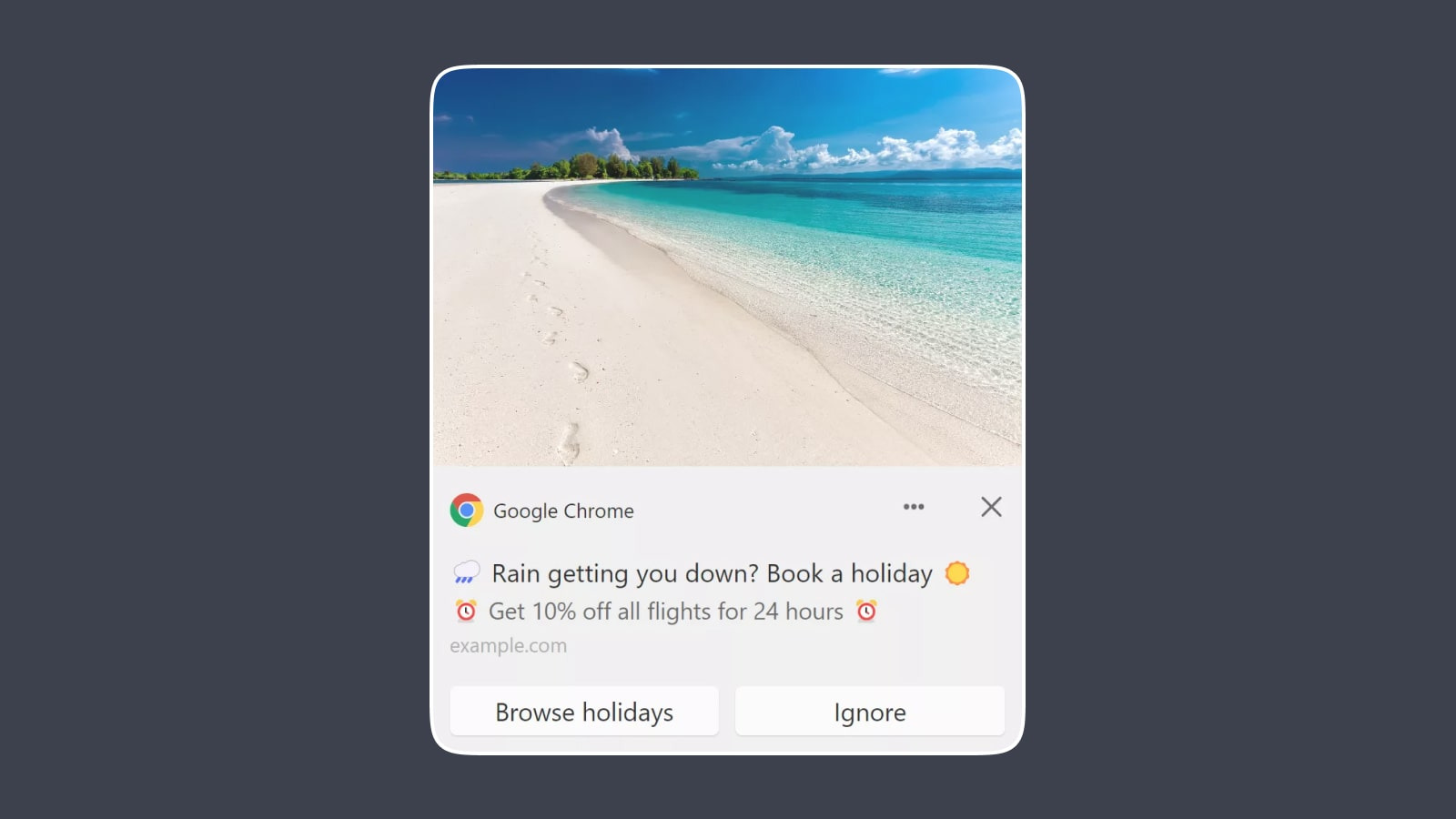
The contrast between the rainy-day forecast (supported by emojis) and the sunny, paradise-like photo is a powerful motivator to escape the gray and enjoy the sunshine. Even if you’re not in the travel business, you can still use weather cues creatively. Retailers can promote sunscreens and sunglasses when it’s sunny, while event companies can push indoor activities during bad weather.
Following in the wake of business giants, you too can turn promotional push notifications into an effective marketing tool.
Take these steps to craft push notifications that convert:
Implementing these recommendations can deliver excellent results if you avoid common mistakes in push notification marketing.
What are the most common missteps in push notification marketing?
Marketers sometimes assume they can reach goals faster by bombarding customers with messages. But the “the more, the better” rule doesn't apply here; rather, quite the opposite. A flood of irrelevant push notifications leads to user negativity (also known as user fatigue), resulting in opt-outs instead of conversions.
Would you respond to a push notification that wakes you up at night? Or when you are in the heat of an important business meeting? Most likely not – you’d be annoyed or even angry. App owners should study user habits and localize messages according to the customer’s time zone to ensure positive engagement.
Arousing the user’s curiosity is a worthy goal. Yet, such messages must be supported by content that truly delivers on their promise. Otherwise, users will treat your push notifications as empty “cry wolf” tactics and lose trust, interest, and attention altogether.
Images, videos, and GIFs can enhance notifications and captivate users. However, different devices may have trouble displaying certain media formats correctly. That’s why visuals should complement your text messages, but not replace them.
Working with vetted professionals in the field eliminates such missteps and ensures your push notifications perform at their best.
By choosing Reteno, you get a comprehensive app retention platform that streamlines and simplifies the creation and delivery of personalized mobile and web push notifications in multiple languages. Its flexible automation tools, advanced customer segmentation, real-time notification previewer, and powerful analytics dashboard enable brands to craft messages that resonate with any audience and boost conversions significantly. Let us take your push notification marketing strategy to new heights!
Push notifications are app-based messages sent to web or mobile users to promote products, announce updates, drive conversions, and strengthen relationships with customers. To make them effective, brands should build a robust push notification strategy, segment their audience, personalize messages, craft strong CTAs, test their approaches, and analyze the results.
You can maximize value from your push notifications by applying best practices, avoiding common mistakes, and partnering with experienced professionals who use advanced tools to design and execute high-impact push notification campaigns.
Alex Danchenko
|
February 12, 2023
Find out which communication channel to choose between push notifications and text messages. Key differences between sms and push notifications.
Alex Anikienko
|
October 21, 2025
Turn push & in-app notifications into revenue engines with generative AI personalization

